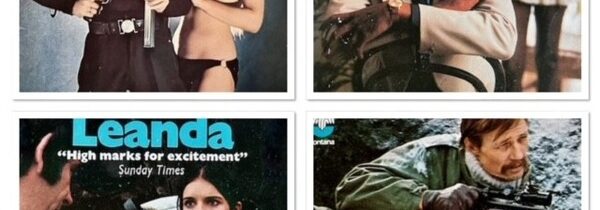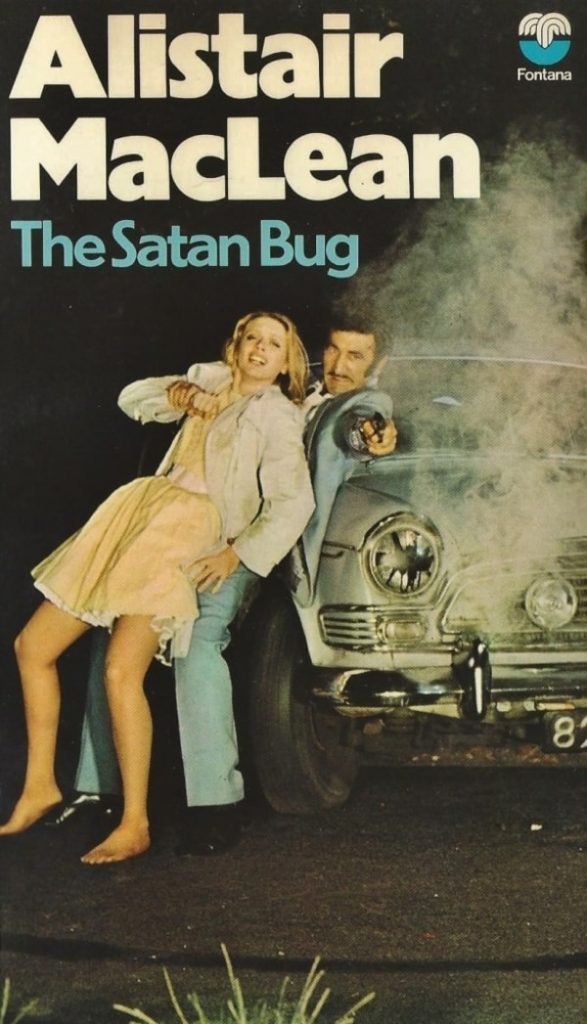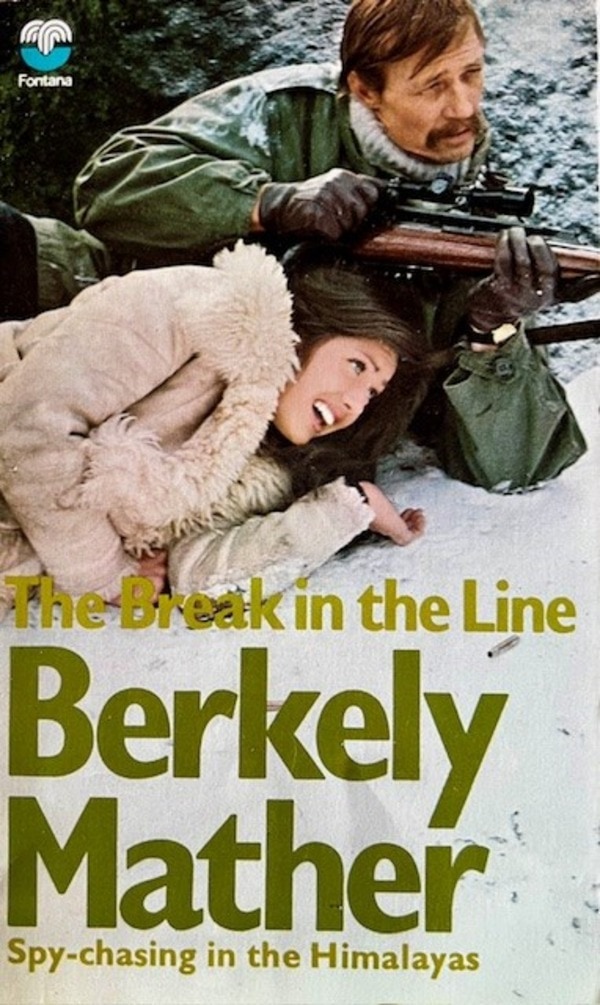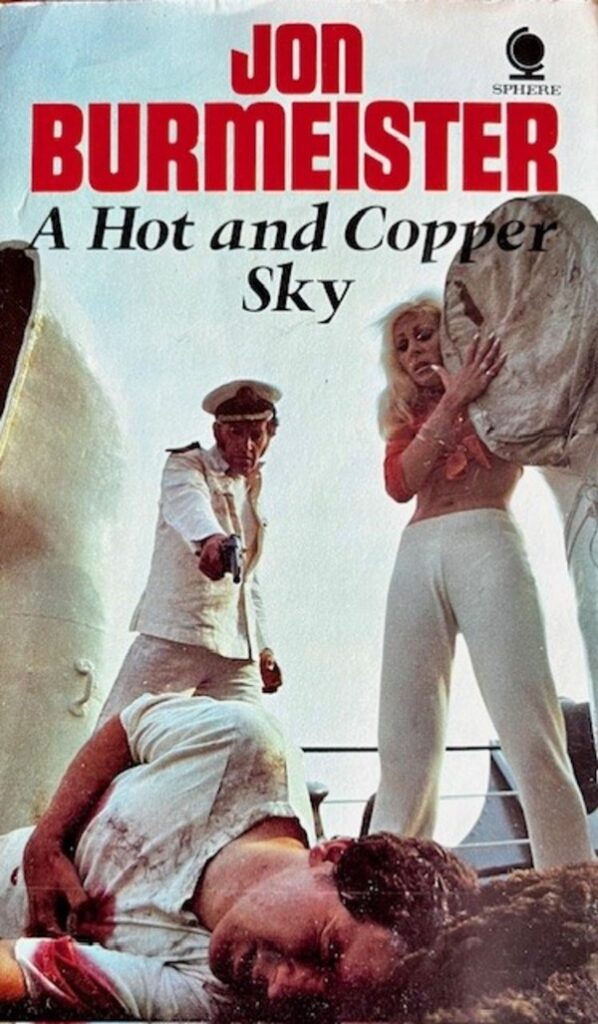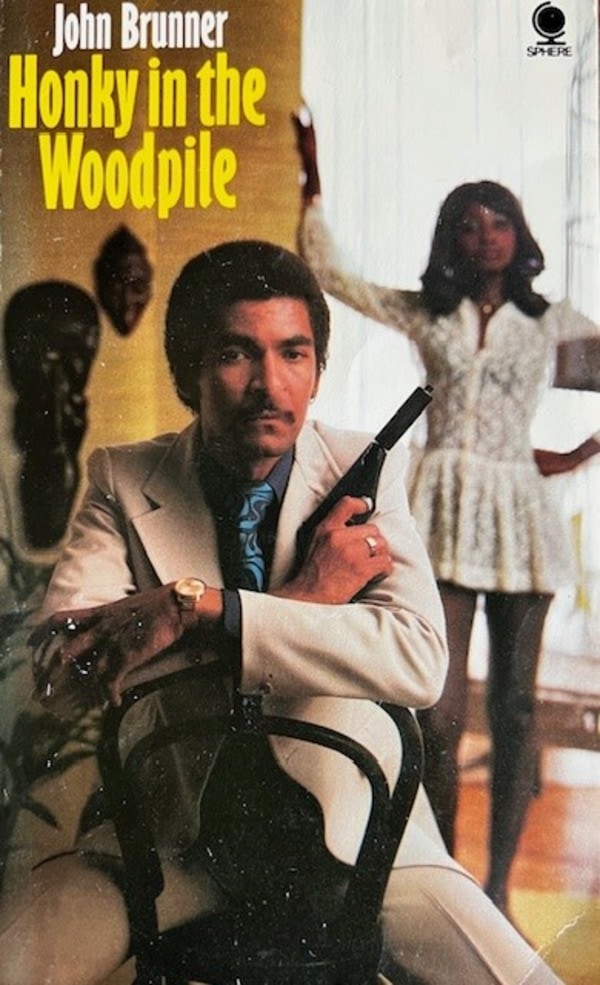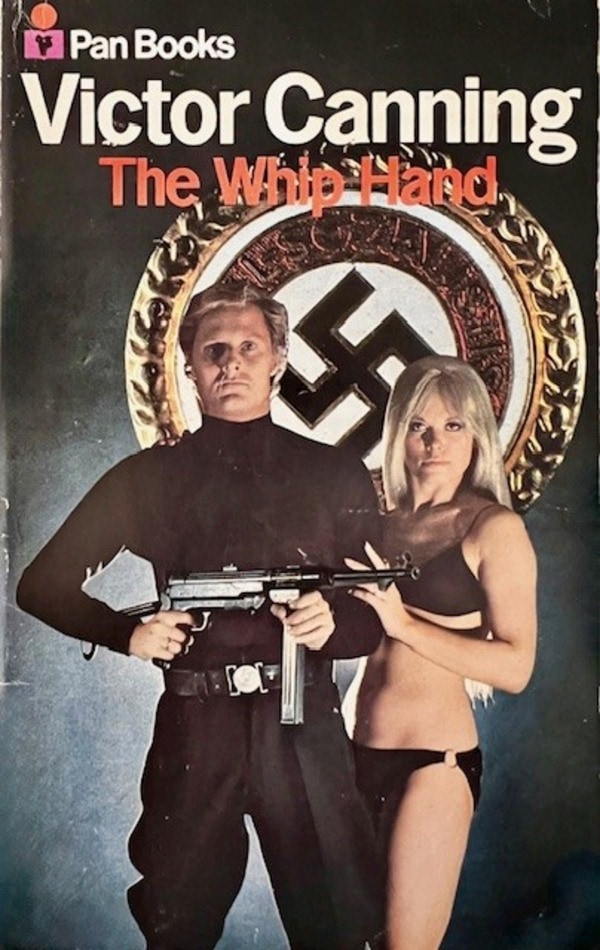GIRLS AND GUNS: BRITISH PHOTOGRAPHIC COVERS
Vintage paperback collectors generally bemoan the shift in the late 1960s/early 1970s from illustrated covers to photographic covers. While the photographic covers usually lack the charm and class of the cover artwork by Robert McGinnis, Sam Peffer, Robert Maguire and many other artists, some of it is quite good and effective. A lot, however, is very bad and some covers leave you wondering as to why the publishers even bothered!
The style of the photographic covers varied from photos of items, often covered in blood, to close-ups of faces and body parts, to choreographed ‘action shots’ of scenes from the book. These action shots were frequently used by British publishers such as Fontana, Futura and Sphere on the covers of their thrillers by authors such as Alistair Maclean, Desmond Bagley and, to a lesser event, Hammond Innes:
In my recent book hunting I have come across a new batch of books with photographed ‘action scenes’ on their covers. All of them featured guns and girls, which were almost a prerequisite for thriller covers in the 1970s! None of them are as dramatic as The Satan Bug (above), but some of them are quite good and suggest that some serious effort was made with props, setting and acting. Others were less particular.
Berkely Mather was a very good British thriller writer of the 1950s to the 1970s, whose novels have now fallen out of favour and view. Which is a shame, as his books, particularly The Pass Beyond Kashmir and the spy thriller The Springers are quite good, and have stood the test of time well. The Break In The Line is from 1970 and is an enjoyable adventure thriller set high in the Himalayas, one of Mather’s favourite locations.
The cover is quite eye catching and suggests some effort in staging and dramatic effect, although the girl seems very well made up for someone drudging through the heights of the Himalayas! I am also not sure as to whether the depicted scene actually occurs in the book, although it has been a very long time since I have read it.
Mather is actually a fascinating character, with a colourful personal background. For those who are interested, Mike Ripley’s excellent Kiss Kiss, Bang Bang gives a very interesting summary of Mather’s life and a good analysis of his contribution to British thriller writing.
Walter Winward’s Fives Wild (Futura, 1976), is also quite good at suggesting a rugged mountain location, although it was probably shot in a local quarry on a couple of very small rocks. At least the two ‘actors’ are wearing snow goggles, something that was missing from The Break In The Line.
It is an effective cover, although it is not clear as to whether the girl is trying to help or hinder the man. I have not read the novel, so can not comment on whether the cover accurately represents a scene from the book, or not.
Andrew Garve (aka Paul Winterton) is another British thriller/crime writer who has faded from view. I was never a huge fan of his books, which tended to be sluggish, although his The Ascent Of D13 is well regarded. A Hero For Leanda was originally published in 1959, and was an adventure thriller set in the Indian Ocean.
This 1970 Fontana edition is a good example of ‘the pretty girl with a terrified look being threatened by a gun’ cover style, which became reasonably clichéd by the end of the 1970s.
Jon Burmeister was born in South Africa and wrote a handful of thrillers mainly set in exotic locales around Africa and Asia. Although he occasionally ventured to London, as with his very effective The Weatherman Guy about a plot to blow up the Queen and the British Houses of Parliament.
A Hot And Copper Sky is set on “the baking waters of the South China Sea”, and seems to be in the Hammond Innes style of interesting locations, harsh climate, crime and men at war with the elements and each other. The cover features another stressed young woman, a pointed gun, lots of spilt red wine and some dirt.
There is less suggested action on the cover of John Brunner’s Honky In The Woodpile (Sphere, 1973), but it still has a girl and a gun, and a silencer.
Brunner was best known as a writer of science fiction, but in the early 1970s he embarked on a brief series of books featuring Max Curfew “a tremendous (coloured) figure on the espionage scene”.
I have not read any of the Curfew books, but I am tempted to give this one a go.
The girl is actually holding the gun on the cover of Gavin Black’s The Golden Cockatrice (Fontana, 1974).
The Golden Cockatrice, was one of the several Asian based thrillers that Black wrote featuring Paul Harris, a British businessman based in Asia, who always seems to be at the wrong end of a gun. I quite liked them when I read them back in the 1970/80s, particularly Suddenly In Singapore, but I do not recall this one at all.
The cover is more subtle than the others, but reasonably effective, although it does not scream ‘read me’!
Finally, the cover on the 1971 Pan edition of Victor Canning’s The Whip Hand is very staged, but it does manage to capture in one photo the 1970s thriller trifecta of submachine gun, blonde girl and a Swastika! I have had it for some time, and it remains one of my favourite photographic covers.
The book is actually much better than the cover suggests and is well worth a read: https://murdermayhemandlongdogs.com/trashy-tuesday-victor-canning-the-whip-hand/

